Category: CDP
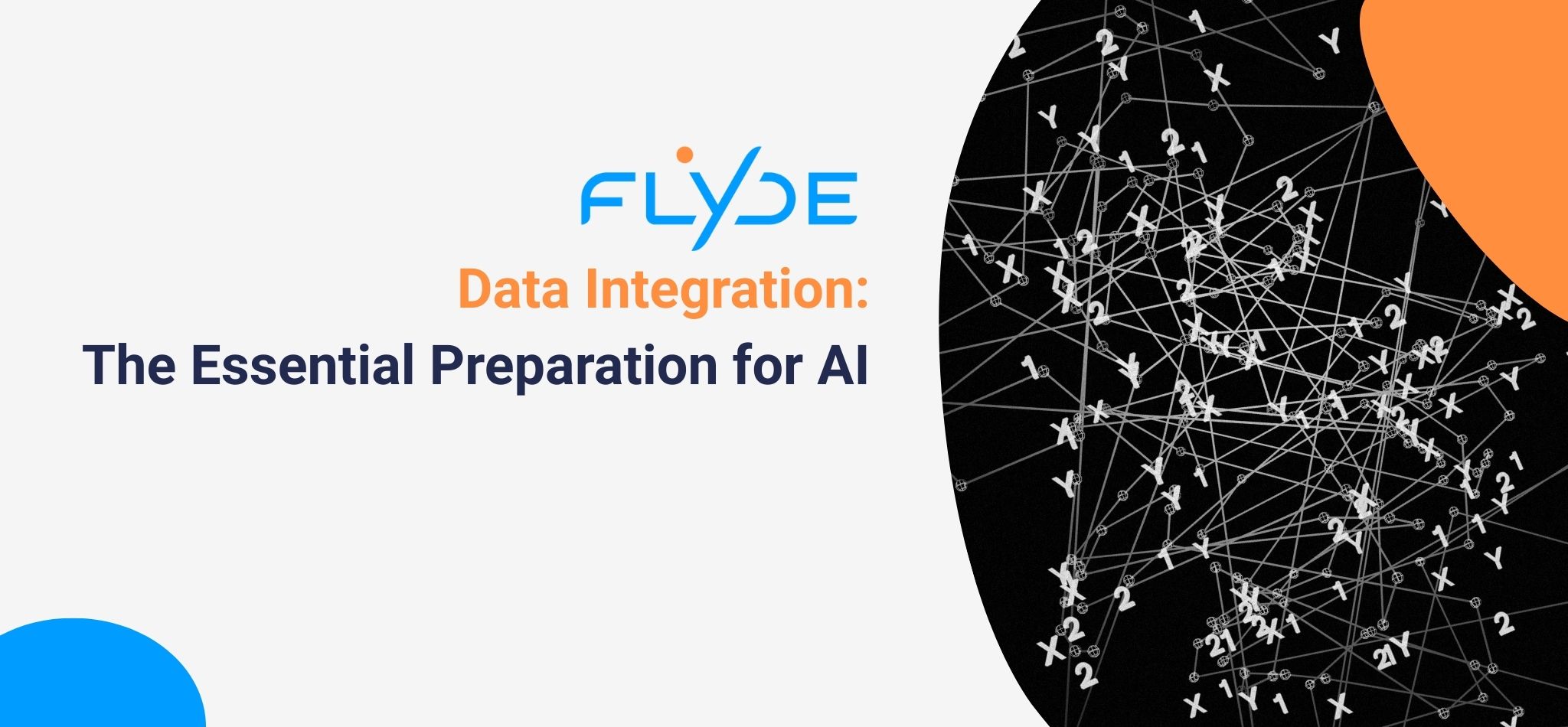
Data integration is the essential first step for any business looking to implement artificial intelligence technology. Everyone is talking about AI right now. Marketing campaigns that adapt in real time. Customer service that anticipates needs before they are expressed. Predictive models that make complex business decisions feel effortless. The possibilities sound endless. But here is the part that does not always make the headlines: AI cannot deliver results without the right foundation. That foundation is reliable, complete and accurate data.
According to Gartner’s 2025 Hype Cycle for Artificial Intelligence Goes Beyond GenAI, 57% of organizations believe that their data is not AI-ready. When customer data is scattered across platforms, presented in disconnected reports, and divided into silos, no algorithm, no matter how advanced, can make sense of it. The Gartner report also indicated that less than 30% of AI leaders report that their CEOs are satisfied with the return on AI investments. When AI ambitions clash with siloed data ecosystems and infrastructure constraints, AI will fail to deliver results.
THE HIDDEN WORK: DATA INTEGRATION
Many organizations want to explore AI but quickly discover that their data is not ready. Information lives in CRMs, ecommerce platforms, analytics tools, and support systems. Without a single source of truth, it is impossible to build accurate models or generate reliable insights.
The less glamorous side of AI innovation is the behind-the-scenes work of data integration. Without centralizing data, records are incomplete or duplicated, transactions are disconnected from behaviors, and marketing touchpoints are measured in isolation. The result is noise, not intelligence.
Data integration means more than storing data in one central place. It means connecting, cleaning, and structuring information across all your businesses’ systems, applications, and data sources into a unified, usable format. This unified dataset transforms fragments into full customer profiles. It reveals the journey from the first interaction to the most recent purchase. Most importantly, it provides the context that makes AI accurate and actionable.
HOW FLYDE CAN HELP
The FLYDE Customer Data Platform (CDP) is designed to solve the integration challenge and prepare data for AI-driven use cases. FLYDE connects your data sources, from marketing tools and sales systems to customer service platforms. It collects, standardizes, and combines data into complete profiles that update in real-time.
Once centralized in FLYDE, your data is no longer trapped in spreadsheets or siloed reports. It becomes AI-ready data, structured for insights and accessible across your business units.
With FLYDE you can:
- Build a reliable single view of each customer.
- Feed clean, structured data into AI and machine learning models.
- Provide your marketing, sales, and operations teams with a consistent source of truth.
Once your data is unified, AI can finally do its job. Some of the most powerful opportunities include:
- Smarter personalization: recommending the right product at the right moment, based on actual behavior patterns.
- Leveraging predictive models: forecasting churn, customer lifetime value, or seasonal demand with confidence because the data feeding the model is complete.
- Optimized decision-making: allocating marketing spend where it produces measurable ROI, informed by a complete customer journey.
- Operational efficiency: reducing duplicated work and aligning teams around consistent data.
THE REAL AI MINDSET
AI is not the starting point. It is the outcome of disciplined data integration and unification. Businesses that centralize and structure their data today will be the ones leading with AI tomorrow. Without that preparation, even the most advanced algorithms will fail to deliver meaningful results.
So, if you are excited about AI, and who is not, start with the foundation. With FLYDE, you will not just join the conversation about AI. You will be ready to put it into action. Contact us to schedule a demo and we can show you the possibilities your data holds for AI implementation.
Start taking control of your data today.
Schedule a meeting with one of our experts and discover how FLYDE can help your company achieve its goals.
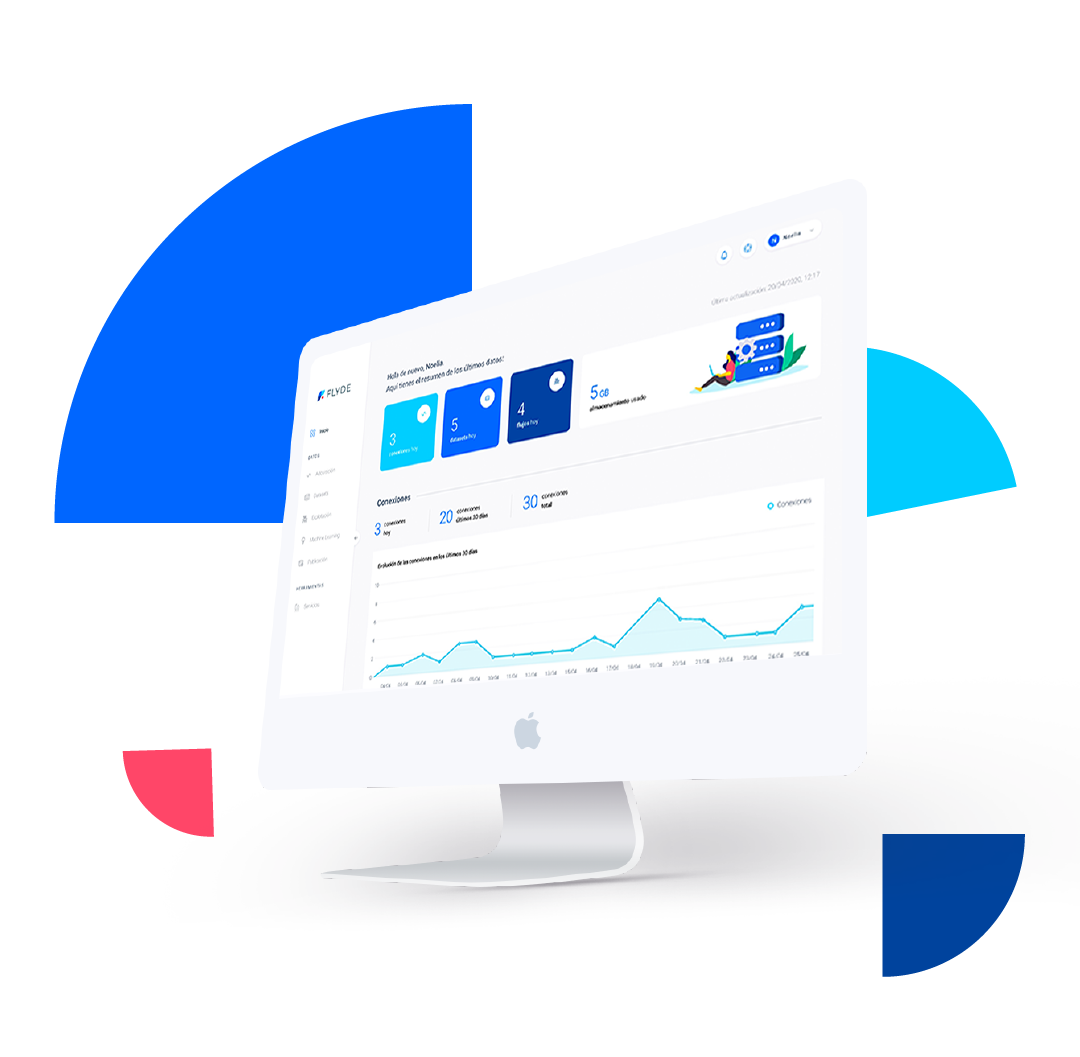
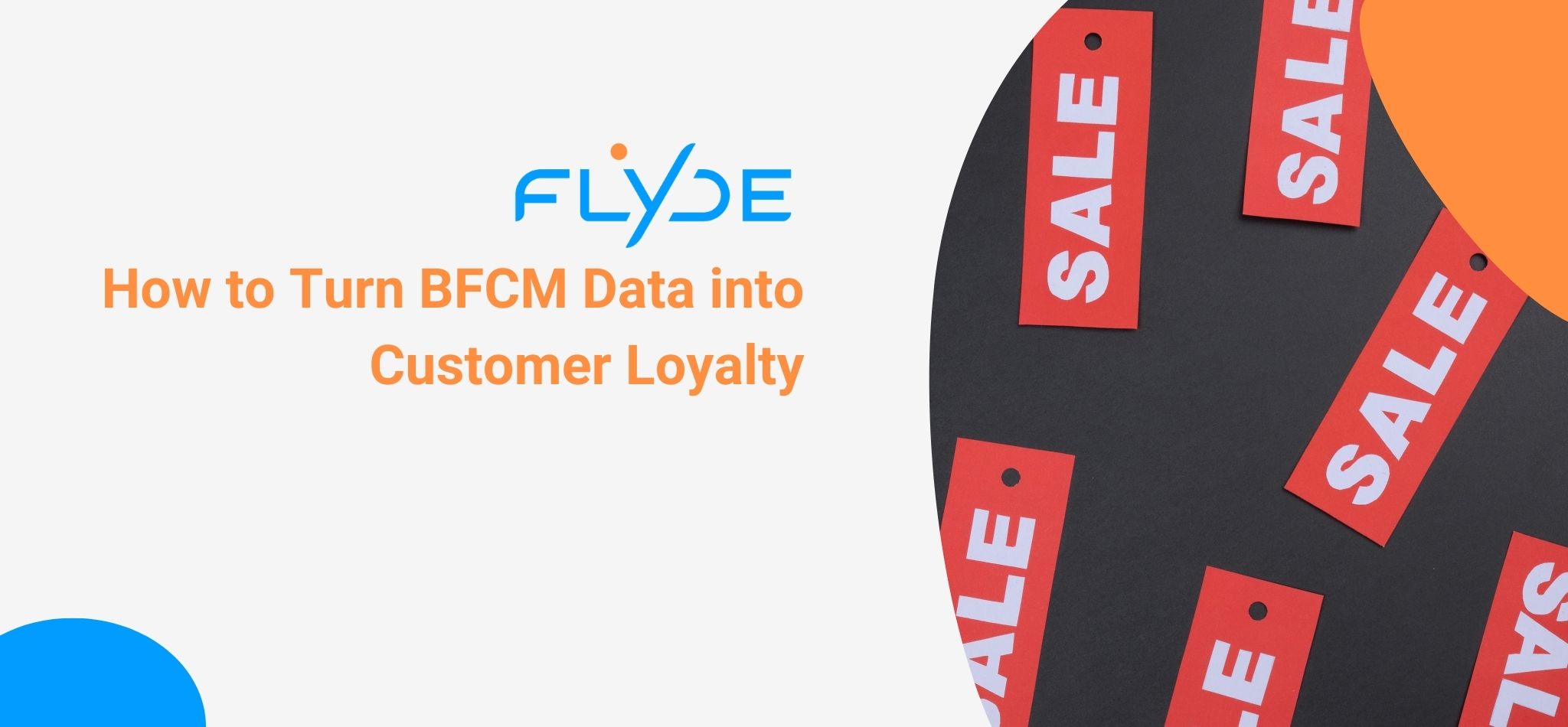
For many businesses, Black Friday–Cyber Monday (BFCM) is the most intense moment of the year for the business’s data. Traffic surges, transactions peak, and first-time buyers arrive in waves. For many brands, this weekend generates a huge portion of their annual revenue.
But the real objective shouldn’t be just to make the sale. The goal should be to convert those new buyers into long-term customers. Without a way to unify and activate data, brands often miss the opportunity to build loyalty after the sale, leaving a massive amount of valuable customer information and opportunity for growth on the table.
THE DATA CHAOS OF BFCM
During BFCM, data flows in from every direction: websites, mobile apps, paid ads, emails, and ecommerce platforms. The omnichannel nature of data sources presents a significant challenge. Customers appear under different IDs, creating fragmented and duplicated records that are almost impossible to activate for retargeting or loyalty campaigns later on. Instead of starting the new year with a stronger customer base, many brands are stuck cleaning up a data mess.
This is where a Customer Data Platform (CDP) becomes an essential tool. A CDP like FLYDE is built to handle this exact challenge by bringing all your customer data into one unified, intelligent platform.
HOW CAN FLYDE HELP?
Real-Time Identity Resolution
One of the most pressing technical challenges of BFCM data management is identity resolution. With traffic and transactions peaking, businesses need a way to link anonymous browsing sessions to known customer profiles.
A CDP like FLYDE combines first-party data such as emails, phone numbers, and loyalty IDs with anonymous digital signals. By resolving identities in real time, the platform eliminates duplicate records and builds a single, accurate profile of each customer. This ensures that even when activity spikes, businesses maintain a complete and coherent view of their customers’ journeys.
Smarter Segmentation
Not all BFCM buyers are equal. Some are loyal customers taking advantage of promotions. Others are deal hunters who may never return without the right follow-up. Treating both groups the same reduces efficiency and limits retention.
McKinsey research shows that companies excelling at customer personalization generate 40% more revenue from those activities than their peers. Advanced segmentation supported by a CDP enables businesses to separate high-value customers from bargain-driven shoppers. For example, FLYDE allows marketers to distinguish between customers who only purchase discounted items and those who also explore full-price collections. This insight shapes tailored post-purchase communication that increases the chance of long-term retention.
Omnichannel Activation
Clean, segmented data is only valuable when it can be activated across the right channels. Modern CDPs sync enriched profiles with platforms such as Meta Ads, Google Ads, email marketing tools, and SMS systems. This allows marketing teams to stop wasting spend on customers who already converted, deliver personalized journeys in the channels where customers are most active, and build targeted retargeting campaigns that deliver higher returns.
By closing the loop between data collection, unification, and activation, businesses ensure that the customer relationships formed during BFCM extend beyond a one-time transaction.
A PRACTICAL EXAMPLE
A consumer electronics retailer uses FLYDE ahead of BFCM to connect its Shopify store, email marketing platform, and Meta Ads. They create unified profiles for 120,000 customers and segment them by purchase margin, that is, those who buy discounted items versus those who pay full price.
After BFCM, the retailer can use FLYDE to trigger automated post-purchase journeys:
- High-value buyers receive loyalty rewards and exclusive early access to new products.
- One-time bargain hunters receive special re-engagement offers to encourage a second purchase.
Impact:
- Reduced duplicate ad spend.
- Higher retention rate for BFCM buyers compared to the previous year.
- Increased email engagement with tailored post-BFCM messaging.
READY TO GET STARTED?
BFCM is more than just a sales spike; it’s a data spike. Without a unified view of your customers, you’re missing a massive opportunity for long-term growth. With a CDP like FLYDE, brands can transform this sales surge into structured intelligence, ensuring they build a loyal customer base instead of just generating short-term revenue.
Ready to maximize your next BFCM? Contact us at FLYDE to book a demo and see how a our intuitive CDP can revolutionize your BFCM data strategy.
Start taking control of your data today.
Schedule a meeting with one of our experts and discover how FLYDE can help your company achieve its goals.


In your CRM, you have a customer named Juan Pérez.
In your email marketing platform, there’s a user with the email jperez@gmail.com.
In your loyalty program, another has the email, juanperez@hotmail.com.
And on your website, there’s a particular anonymous visitor who browses every week.
Your business sees them as four different people, but in reality, they’re the same customer.
When data isn’t unified into a single profile, it’s impossible to truly understand that customer’s journey. The same issue happens with hundreds or thousands of other clients: the fragmented, duplicated data and anonymous records actually correspond to individual people. Without unification, the trends that drive your business get lost in the data.
WHAT IS IDENTITY RESOLUTION?
Identity resolution is the process of unifying the fragmented pieces of information into a single customer profile. Two main approaches are used to achieve this:
- Deterministic Matching: Connects records using unique identifiers like an email address, phone number, or customer ID.
- Probabilistic Matching: Connects records based on behavioral patterns and similarities, such as the same device, IP address, or browsing history.
Combining both methods allows you to create a complete and reliable view: the 360-degree customer profile.
WHY IS IT KEY FOR MARKETING AND DATA?
Identity resolution isn’t just a technical exercise. It directly impacts your business results.
- Consistency: It prevents you from sending duplicate or contradictory messages.
- Personalization: It allows you to deliver relevant experiences across every channel.
- Accurate Measurement: One customer equals a single profile and a single set of KPIs.
- Compliance: It simplifies consent management and privacy requests by centralizing data at a single control point.
IMPLEMENTATION OF IDENTITY RESOLUTION WITH A CDP
A Customer Data Platform (CDP) simplifies and automates identity resolution. At FLYDE, we do it this way:
- Connecting to multiple data sources to centralize customer data and eliminate silos. This includes sources like CRM, e-commerce, campaigns, loyalty programs, web browsing, and more.
- Data normalization to clean, standardize, and remove inconsistencies.
- Applying smart matching rules that combine both deterministic and probabilistic approaches.
- Creating unique customer profiles that are enriched with every new interaction.
- Real-time updates so your teams always work with the most current information.
A PRACTICAL EXAMPLE
A fashion retailer analyzing its databases discovers it has the same customer registered four times: with different emails, as an anonymous website user, and as a member of their loyalty program. These records need to be consolidated into a single unified profile to personalize loyalty campaigns, reduce duplicate mailings, and improve the customer experience.
The identity resolution process is implemented in several phases:
- Integration: First, the CRM, e-commerce, loyalty, email marketing, and web browsing are connected in a single central repository.
- Cleaning and Normalization: Formats are unified (e.g., phone numbers with and without country codes), and incomplete records are removed.
- Smart Matching: Deterministic rules (same email, same phone number) and probabilistic rules (same device and purchasing behavior) are applied to consolidate duplicates.
- Unified Profile: Each customer now has a 360-degree profile, updated in real time with every new interaction.
You can expect to see results such as:
- A reduction in duplicate email mailings.
- An increase in conversion rates for retargeting campaigns.
- An improvement in the customer experience, as they no longer receive repeated or contradictory messages across different channels.
HOW FLYDE FITS IN: THE ROLE OF A CUSTOMER DATA PLATFORM (CDP)
With FLYDE, identity resolution is no longer a technical challenge. Our platform unifies each customer’s scattered data into a single, reliable profile that can be activated across all your channels. It enables you to run smarter campaigns, perform more precise segmentation, and create personalized experiences that generate real value for your customers.
Want to see how it works in practice? Contact us to request a demo, and we’ll show you how FLYDE can open up new possibilities for you.
Start taking control of your data today.
Schedule a meeting with one of our experts and discover how FLYDE can help your company achieve its goals.

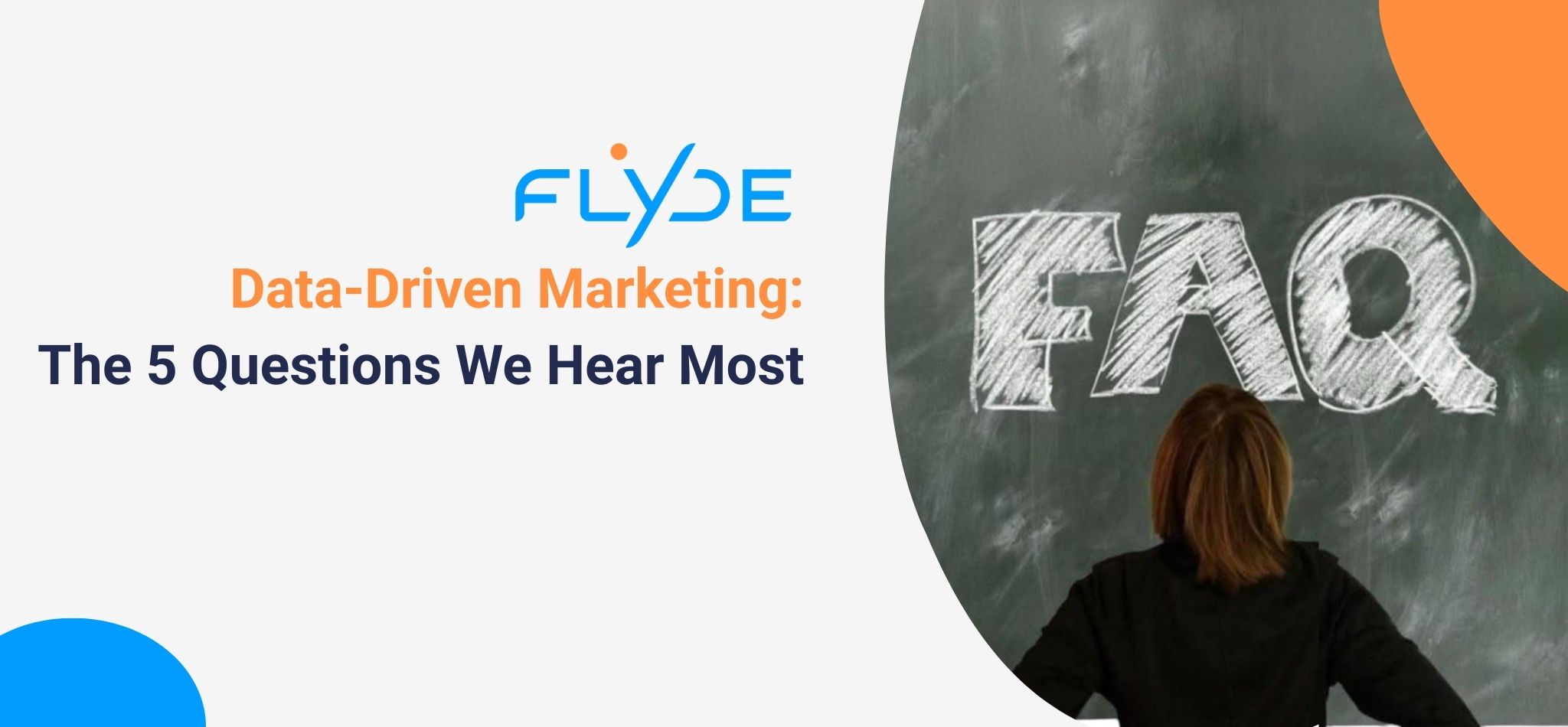
At FLYDE, we talk with marketing teams every day about data, performance, and the customer journey. We often hear the same questions, so we’ve gathered the five most common ones, with clear answers and links to our blogs for more in-depth information.
1. WHAT IS MARKETING MIX MODELING (MMM) AND HOW CAN WE IMPLEMENT IT?
Marketing Mix Modeling (MMM) is a statistical technique that helps you understand which marketing channels are actually driving results. It analyzes variables like advertising, pricing, promotions, and seasonality to measure their impact on sales, conversions, and revenue. It uses historical, aggregated data, so it doesn’t rely on cookies or user-level tracking. That’s why we’re seeing more and more marketing teams turn to MMM.
More information on MMM and how to implement it:
👉 What is Marketing Mix Modeling?
2. CAN WE IDENTIFY ANONYMOUS WEBSITE USERS WITH NAVIGATION FINGERPRINTING AND IS THEIR CONSENT NEEDED?
Browser fingerprinting is a technique that can identify a device based on its technical characteristics (browser, screen resolution, language, etc.) without installing cookies. It allows you to track anonymous users across multiple sessions to better analyze user behavior in the early stages of the customer journey.
More information on fingerprinting and how to ensure user privacy:
👉 Navigation Fingerprinting: Tracking Anonymous Users Without Cookies
3. WHAT IS RFM ANALYSIS AND HOW DOES IT IMPROVE CUSTOMER SEGMENTATION?
RFM analysis is a statistical technique that involves analyzing customer data in terms of Recency (how recently they purchased), Frequency (how often they purchase), and Monetary value (how much they spend) to gain insights into the behavior of different customer groups. These groups can be used to optimize customer segmentation, improve retention, and maximize ROI and Customer Lifetime Value (CLV).
More information on RFM analysis and the role of a CDP:
4. WHAT IS A CUSTOMER DATA PLATFORM (CDP)?
A CDP unifies data from multiple sources, organizes it into unique profiles, and makes it actionable in real time. A CDP is a key component of modern data-driven marketing strategies.
We explain this in more detail and outline the benefits a CDP can bring to your business:
👉What is a Customer Data Platform (CDP)?
5. WHAT IS THE PROCESS FOR IMPLEMENTING A CDP?
FLYDE is an intuitive and simple platform. It can be implemented without the need for a specialized technical team. We invite you to request a demo and we can show you the process in detail.
Schedule a demo:
DO YOU HAVE ANOTHER QUESTION ABOUT DATA-DRIVEN MARKETING?
Contact us to let us know, and we’ll address it in a future post. Plus, if you want to see how a CDP can improve your data-driven marketing strategy, request a demo with FLYDE and we can discuss.
Comienza a tomar el control de tus datos desde hoy.
Agenda una reunión con uno de nuestros expertos y descubre cómo FLYDE puede ayudar a tu empresa a alcanzar sus objetivos.


One of the most common questions we get from clients at FLYDE is:
Can we identify anonymous visitors using fingerprinting, and do we need consent for that?
It is an important question. As customer data strategies become more sophisticated, marketing teams are looking for ways to understand user behavior earlier in the journey. In many marketing platforms, anonymous website visits are siloed from the rest of the customer journey. Let’s imagine an anonymous user clicks a campaign, visits a few pages, and then returns to your site several times. The portion of the customer journey before the user identifies themself is lost. That’s where navigation fingerprinting comes in.
FROM THIRD-PARTY COOKIES TO FINGERPRINTING
For years, marketers relied on third-party cookies to track users across websites. These cookies powered everything from ad targeting to personalization and attribution. But browser updates and privacy regulations have changed the rules.
- Safari and Firefox began blocking third-party cookies by default
- Google Chrome is in the process of phasing them out
- Privacy regulations have tightened consent requirements
- Users are more aware and selective about how their data is tracked
As third-party cookies disappear, navigation fingerprinting has gained traction as an alternative. But it is not a free pass. Like cookies, fingerprinting is also subject to privacy regulation when used for marketing purposes.
WHAT IS NAVIGATION FINGERPRINTING?
Navigation fingerprinting, also known as browser fingerprinting or device fingerprinting, is a technique used to identify a device based on technical characteristics, without placing a cookie.
When someone visits a site, their browser reveals a combination of traits such as:
- Browser version and operating system
- Language, timezone, and screen resolution
- Installed plugins or font
- Device inputs (touch versus keyboard)
When combined, these signals form a kind of digital fingerprint. With the right setup, this fingerprint can be used to recognize a returning visitor, even if they are browsing anonymously.
WHY MARKETERS WANT TO USE IT
In theory, fingerprinting allows brands to:
- Track anonymous visitors across sessions
- Trigger personalized experiences earlier in the journey
- Detect fraud or suspicious activity
- Match anonymous behavior to user profiles once identification occurs
It is a powerful tool. For example, advertising platforms like Meta or Google only give aggregated insights for anonymous users. But with FLYDE’s browser tracking, you can tie an ad campaign to an individual user if they arrive on your site through a tagged UTM and later identify themselves (ie. by leaving an email) and give consent. This lets you link the user’s anonymous behavior to known user data, giving you a complete view of their journey, from top-of-funnel browsing to conversion.
HOW FLYDE SUPPORTS PERFORMANCE AND PRIVACY
At FLYDE, we believe privacy and performance can go hand in hand. We support fingerprinting and advanced browser tracking, but always within a responsible, user-centric framework.
Privacy is guaranteed on two levels:
- Cookie consent required: If you install the FLYDE tracking script through Google Tag Manager, tracking only activates once the user accepts your site’s cookie policy.
- Legal basis for identification: A person is only identified once they register or submit their email. At that point, they’ve accepted your legal terms for data processing.
This allows you to activate valuable data without compromising compliance.
FROM NAVIGATION TO INSIGHT
Once the user has consented, you can activate that data in meaningful ways:
- Segment audiences based on on-site behavior (e.g. pages viewed, time spent)
- Enrich campaigns with cross-channel tracking (e.g. email clicks, ad visits)
- Score leads in real-time using the Lead2Customer algorithm, which assigns a probability of conversion from 0 to 10 based on navigation and engagement patterns
You can trigger personalized flows, build predictive segments, and prioritize follow-up efforts with the confidence of having a full vision of their customer journey.
HOW FLYDE CAN HELP
Fingerprinting can help you better understand customer behavior, even at the earliest stage of the journey. FLYDE helps you make the most of every interaction, whether you’re tracking anonymous users across sessions, launching predictive models, or building smarter segments.
Contact us to schedule a meeting to discuss how a Customer Data Platform del Cliente (CDP) like FLYDE can unlock the full customer journey, starting with anonuymous web browsing.
Start taking control of your data today.
Schedule a meeting with one of our experts and discover how FLYDE can help your company achieve its goals.


Longer days. Different routines. Out-of-office replies. Summer changes everything, including your customers’ behavior.
People shop at different hours, dine in new places, travel more (or less), and respond to different channels. The usual patterns of when, where, and how people buy can shift significantly. If your marketing is based on static segments or last year’s assumptions, you risk missing key moments of engagement.
The good news is that with a strong data strategy (and a Customer Data Platform like FLYDE) summer becomes an opportunity. You can fine-tune your segmentation, messaging, and timing to reach customers at the right moment, through the right channel, with offers that align with their seasonal behavior.
PREDICT WHAT’S NEXT WITH BEHAVIOR-BASED MODELS
Customer journeys are rarely linear. In summer, they’re even more unpredictable. FLYDE helps bring clarity to seasonal shifts by:
- Unifying real-time customer behavior across channels like web, email, mobile app, social media, and in-store POS systems.
- Applying predictive models to anticipate return likelihood, product preferences, or even travel planning windows.
- Segmenting audiences dynamically based on changes in browsing, booking, or purchase behavior.
Instead of reacting to changes after they happen, FLYDE allows you to anticipate them, so you’re always one step ahead.
HYPERPERSONALIZATION OF MESSAGING AND OFFERS
Seasonal relevance matters. Whether it’s travel planning or heatwave-driven impulse buys, being able to respond quickly makes the difference. With FLYDE, you can activate insights in real time to:
- Deliver personalized promotions based on forecasted demand and individual behavior.
- Reallocate ad spend dynamically when a campaign underperforms with specific segments.
- Automate email and advertising campaigns triggered by behavior, not just by a marketing calendar.
This means more relevant interactions, improved engagement rates, and smarter use of your marketing budget.
INDUSTRY IN FOCUS: HOTELS, RESTAURANTS, AND RETAIL
Hotels
A busy hotel could analyze in-stay guest behavior during the peak summer season. By unifying data from their app, restaurant bookings, spa services, etc., they can identify key patterns—such as which guests are most likely to book add-ons like late checkouts, poolside dining, or spa treatments. This allows them to activate targeted in-stay messaging tailored to each guest’s profile, promoting high-margin services at the optimal moment (for example, a post-check-in spa offer or late lunch promo after a pool reservation). As a result, they can expect to see not only an increase in revenue from add-ons but also higher satisfaction scores in post-stay surveys, which in turn can translate into more returning guests.
Restaurants
A high-traffic restaurant might notice that weekday lunch volume drop during the summer months, while evening and weekend group bookings rose. If they identify this pattern early, they can adjust their marketing strategy, and promote group dining offers around local events.
Retail
A fashion retailer may notice that in summer, browsing behavior shifts from desktop to mobile, particularly in the afternoons. Using the behavioral data available with a CDP, they can adapt campaign timing and creative formats to favor mobile-first formats in order to increase click-through and conversion rates.
MAKE SEASONAL SHIFTS YOUR COMPETITIVE ADVANTAGE
Many businesses feel the effects of seasonal changes, but few are ready for them. A Customer Data Platform del Cliente (CDP) like FLYDE
helps you move beyond static insights by connecting and activating your customer data in real time. With unified profiles and predictive intelligence, you can identify seasonal patterns early and respond with agility.
Instead of playing catch-up, you’re positioned to anticipate behavior and deliver personalized experiences that reflect real-time needs, whether it’s summer, back-to-school, or the holiday season.
Let’s make your data work harder this summer, and every season after. Contact us for a personalized demo of how to turn customer behavior shifts into strategic opportunities.
Start taking control of your data today.
Schedule a meeting with one of our experts and discover how FLYDE can help your company achieve its goals.


Success starts behind the scenes. While marketing, sales, and product innovation often steal the spotlight, inventory management can make or break your profitability and customer experience.
Think of your stock as a dynamic, strategic asset. Managed well, it fuels growth. Neglected, it quietly drains your resources and undermines your business.
THE COSTS OF INVENTORY MISMANAGEMENT
Poorly managed stock has immediate and costly consequences:
- Stockouts: A customer is ready to buy, but the item isn’t in stock. That’s not just a lost sale; it’s a missed opportunity and a negative customer experience. According to a study carried out by the IHL Consulting Group, an estimated $1.2 trillion in global retail sales was lost in 2023 due to stockout.
- Excess inventory: You’re tying up capital, crowding your warehouse, and risking spoilage, theft, or obsolescence. Overstock quietly erodes your bottom line. The IHL Group estimated that excess inventory cost retailers about $562 billion in 2023 due to markdowns and obsolescence.
- Inefficient operations: Poor stock management leads to delays, fulfillment mistakes, and disrupts workflows. The consequences in terms of employee productivity and job satisfaction can also be far-reaching.
THE BENEFITS OF SMART STOCK MANAGEMENT
According to the Institute for Business Forecasting, a 15% increase in inventory forecasting accuracy translates into a 3% increase in earnings before interest and tax (EBIT). Great inventory management is strategic. When done right, it delivers:
- Increased customer satisfaction: Reliable stock availability builds trust and keeps customers coming back.
- Reduced costs: You’ll be able to avoid surcharges for rush shipping, unnecessary storage fees, and waste from obsolete stock.
- Better cash flow: Freeing up capital from excess inventory gives you more flexibility to invest in growing your business.
- Efficient operations: With clear processes and real-time data, your team can move faster and make fewer mistakes.
- Smarter decisions: Accurate inventory data allows you to make smarter, data-driven business decisions. It helps guide pricing, purchasing, and marketing based on real demand.
THE ROLE OF TECHNOLOGY
Fortunately, artificial intelligence (AI) and machine learning (ML) are transforming inventory management by enabling more accurate demand forecasting. Demand forecasting is the practice of using historical data, market trends, and advanced analytics to predict future customer demand for a product or service. It empowers businesses to make smarter decisions across inventory, production, staffing, and budgeting—ultimately reducing waste, avoiding stockouts, and improving operational efficiency.
AI/ML-powered demand forecasting delivers key advantages for inventory management, including:
- Real-time visibility: Instantly see what’s in stock, where it is, and what needs replenishing.
- Automation: Streamline purchasing, receiving, and fulfillment processes to boost efficiency and reduce errors.
- Advanced analytics: Detect trends, optimize inventory levels, and identify bottlenecks or slow-moving stock.
- System integration: Centralize data from sales, finance, and e-commerce platforms. A Customer Data Platform (CDP) like FLYDE can help unify and enrich this data for smarter forecasting.
INVENTORY MANAGEMENT HEALTH CHECKLIST
How effective is your inventory management system? If you answer “no” to several of these questions, it might be time to rethink your approach.
Data & Visibility
- Can you see inventory levels in real time across all channels and warehouses?
- Do you have a centralized view of customer demand trends?
- Is your inventory data integrated with sales, marketing, and finance systems?
Forecasting & Planning
- Are your forecasts based on historical data and real customer behavior?
- Are your forecasting models updated regularly?
- Can you confidently anticipate when you will encounter a spike or a lull in demand?
Efficiency & Operations
- Is your restocking process automated (or is it manually triggered)?
- Are fulfillment mistakes (e.g., wrong items, delayed shipments) a rare exception?
- Do you know your inventory turnover rate?
Financial Impact
- Are you confident that your inventory is not tying up more capital than necessary?
- Are you able to avoid paying extra fees for expedited shipping or unnecessary storage?
- Does your team have fast access to accurate data to make stock decisions?
HOW FLYDE CAN HELP
To accurately forecast demand and optimize inventory, a Customer Data Platform (CDP) like FLYDE is essential for consolidating data from various sources.
FLYDE centralizes data from touchpoints across paid media, CRM, social, email, web navigation, and offline events. Whether you’re working with dozens of fragmented sources or just trying to get a full view of the customer journey, FLYDE brings your data together and enriches it with socio-demographic and interaction data. With FLYDE’s ML algorithms, you’ll be able to analyze the behavior of your customers, observe in real time how their movements affect the demand for your products, and anticipate future demand.
Contact us to schedule a demo to find out how FLYDE approaches demand forecasting in our easy-to-use Customer Data Platform.
Start taking control of your data today.
Schedule a meeting with one of our experts and discover how FLYDE can help your company achieve its goals.

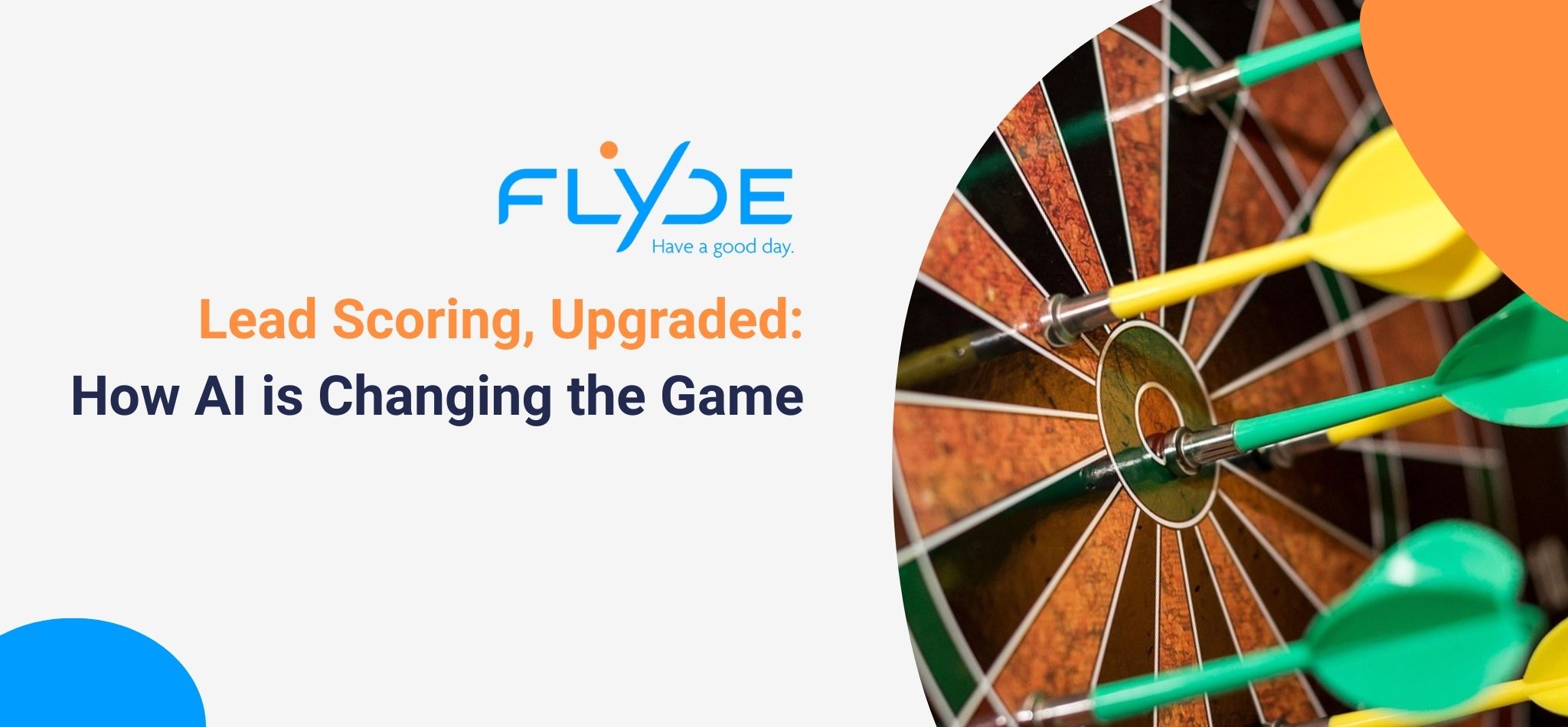
You’ve assigned points to job titles, tracked email opens, and called the hot leads who ghosted. Welcome to the world of traditional lead scoring.
For years, marketers have relied on scoring models that evaluate leads based on demographics and surface-level actions like website visits or email clicks. But these models often fail to capture true buyer intent. They are based on assumptions as opposed to behavior, and they often overlook high intent leads with atypical characteristics.
THE PROBLEM WITH TRADITIONAL LEAD SCORING
Despite being a foundational tool in marketing, traditional lead scoring has major drawbacks:
- Inaccuracy – Based on incomplete or outdated data.
- Subjectivity – Scoring criteria are often inconsistent or biased.
- Lack of Scalability – Difficult to maintain effectively as lead volume grows.
- Blind Spots – Ignores pre-identification behavior (e.g. anonymous browsing).
These models can overlook high-intent leads who don’t fit your ideal buyer persona. Let’s imagine, your sales team typically targets CEOs or other high-level decision makers. With traditional lead scoring methods, you could easily overlook a junior employee who is doing research for his/her boss, who is the CEO.
AI-powered lead scoring, however, goes beyond assumptions, delivering real-time insights that help you prioritize the right leads, faster.
Traditional lead scoring sees behaviors. AI understands their intent.
MEET LEAD2CUSTOMER: FLYDE’S AI MODEL THAT UNDERSTANDS THE WHOLE JOURNEY
FLYDE’s platform replaces the outdated model with something smarter: Lead2Customer, our AI-powered predictive model that evaluates leads based on real behavior, not assumptions.
Unlike traditional methods that rely heavily on demographic filters, Lead2Customer looks at a rich set of behavioral signals across the entire funnel, such as:
- Website navigation patterns (even before users identify themselves)
- Newsletter signups
- Email marketing open and click-through rates
- Webinar attendance
- Social media engagement
HOW IT WORKS
The Lead2Customer algorithm uses machine learning to calculate a dynamic conversion probability, expressed as a percentage. This means every lead in your CRM isn’t just labeled “hot” or “cold”—they’re scored in real time based on how likely they are to convert.
Unlike traditional systems in which leads are scored periodically, AI systems can adjust scores in real time as new data becomes available. This means that your sales and marketing teams can act even when a lead’s behavior suddenly changes. Imagine for example, that a lead suddenly shows new interest by attending a webinar, downloading a white paper, and visiting your pricing page all within an hour. AI doesn’t have to wait for your weekly scoring batch; it can immediately flag the lead and your sales team can reach out.
What’s more? It learns and improves over time. As your AI system observes how leads convert (or fail to), it learns to identify better indicators, continuously optimizing the scoring model to match your evolving data. This ongoing learning process is one of the most valuable aspects of AI-powered lead scoring, as it ensures that your system is always evolving to reflect changes in customer behavior, industry trends, and marketing strategies.
HOW AI-POWERED LEAD SCORING IS CHANGING THE GAME
AI-powered lead scoring methods, like Lead2Customer, enable your sales and marketing teams to work more efficiently and effectively:
- Behavior-based scoring – Uncover high-potential leads who don’t match your typical buyer persona.
- Full-funnel visibility – Capture both anonymous and identified user behavior.
- Real-time adaptability – Prioritize leads based on the latest interactions.
- Increased conversion rates – Focus on the leads that matter most, when it matters most.
- Smarter use of resources – Don’t waste time on dead-end prospects.
- Faster response times – Engage leads at peak interest.
- More personalization – Tailor content and timing to the moment.
SMARTER LEAD SCORING STARTS WITH SMARTER DATA
To power AI-driven scoring, you need unified, real-time customer data. That’s where FLYDE’s Customer Data Platform (CDP) comes into play. FLYDE pulls data from every touchpoint—website interactions, email engagement, social activity, and many more—creating a centralized customer profile. This unified data layer allows AI to update lead scores dynamically across all platforms, ensuring that your marketing and sales teams are always working with the most accurate and up-to-date insights.
With FLYDE powering your lead scoring process, your team can make faster, smarter decisions, prioritize the highest-value opportunities, and ensure that every lead counts.
Contact us to schedule a demo to find out how FLYDE can help you unlock the full potential of AI to boost the success of your marketing and sales teams.
Start taking control of your data today.
Schedule a meeting with one of our experts and discover how FLYDE can help your company achieve its goals.

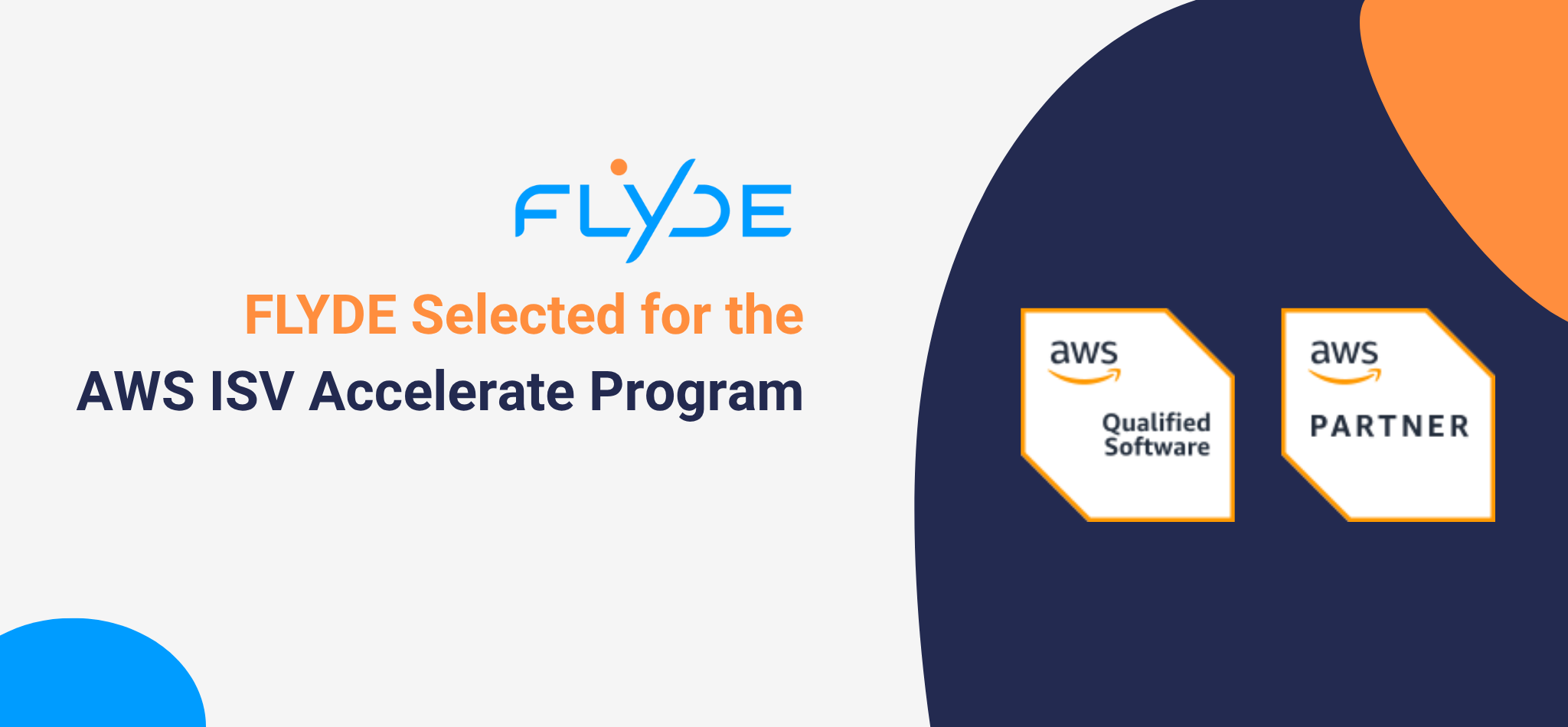
FLYDE is proud to announce its acceptance into the Amazon Web Services (AWS) Independent Software Provider (ISV) Accelerate Program, a co-sell initiative for AWS Partners that provide software solutions that run on or integrate with AWS. This milestone reflects FLYDE’s technical excellence, customer commitment, and alignment with AWS best practices—following a rigorous vetting and approval process.
The AWS ISV Accelerate Program is an exclusive program for software providers that meet high technical and business standards. Gaining acceptance into the program means that FLYDE’s platform has been carefully evaluated by AWS for its scalability, security, and performance within the AWS ecosystem.
“This isn’t a badge you simply apply for—it’s earned,” said Paco Herranz, CEO of Flyde. “Joining the AWS ISV Accelerate Program is the result of months of architectural reviews, documentation, and validation. It confirms that our infrastructure is solid and that we’re ready to grow with AWS by our side.”
FLYDE also underwent the AWS Well-Architected Framework review, which evaluates design across a series of critical pillars: operational excellence, security, reliability, performance efficiency, cost optimization, and sustainability. This designation validates that FLYDE not only runs efficiently on AWS, but also follows cloud-native best practices for secure and scalable data infrastructure. It’s further assurance that FLYDE is built on a foundation of robust, resilient, and secure cloud infrastructure.
WHAT DOES THIS MEAN FOR FLYDE’S CLIENTS?
- Faster, more secure deployments thanks to AWS-native architecture
- Improved scalability for growing businesses
- New channels of support and innovation via collaboration with AWS sales teams
- Confidence in as a thoroughly vetted solution, built to perform at enterprise standards
FLYDE’s inclusion in the ISV Accelerate program also paves the way for deeper integrations with AWS services and access to joint go-to-market opportunities through Marketplace, which will ultimately benefit clients with faster implementations and enhanced product support.
Read more about FLYDE’s AWS-native CDP and how it unifies customer data across omnichannel environments,
ABOUT FLYDE
FLYDE is a Customer Data Platform (CDP) that unifies data from multiple sources—such as eCommerce, in-store purchases, CRM systems, email campaigns, and advertising platforms—into a single, comprehensive customer profile. Using ML/AI-powered predictive models, FLYDE processes this data in real-time, to empower businesses to anticipate customer behaviors, preferences, and trends, boost acquisition, lifetime value (LTV), and retention.
Contact us for a demo and let us show you how FLYDE makes data accessible and actionable, empowering businesses to deliver smarter, more personalized experiences.
Comienza a tomar el control de tus datos desde hoy.
Agenda una reunión con uno de nuestros expertos y descubre cómo FLYDE puede ayudar a tu empresa a alcanzar sus objetivos.


In a perfect world, a customer clicks on an ad, falls in love with your product, and converts on the spot. You know exactly which campaign worked, which channel gets credit, and where to increase your ad spend. Easy.
But we don’t live in a perfect world. The customer journey isn’t single-channel or linear. We live in the age of omnichannel marketing. The reality is that a single purchase might be influenced by a Google search, a TikTok video, a webinar, a promotional email, or a conversation with your sales team.
Attribution—figuring out which touchpoints actually matter in the buyer’s journey—is no longer simple. It’s a messy, multi-source puzzle. And without solving it, you risk spending your budget in the wrong places.
So, let’s dive in and examine what attribution really means in omnichannel marketing campaigns and what challenges we face as marketers to assign credit where credit is due.
WHAT IS ATTRIBUTION?
At its core, attribution is about assigning credit to each step that helps take a customer from “just looking” to “just bought.”
In single-channel or linear journeys, this used to be easy. But today, marketers rely on a mix of digital and offline channels working together, which means that the process of attribution has had to evolve.
Let’s look at a few common attribution models:
- First-touch: Gives all credit to the first interaction. If we want to focus on awareness metrics, this is a great approach, but it offers little insight in terms of conversions.
- Last-touch: Credits the final click before a conversion. Many platforms use this as the default model, but it represents an oversimplification of the customer journey.
- Linear: Spreads credit evenly across all touchpoints. Here, the whole journey is taken into account, but not very strategically.
- Time-decay: Gives more credit to recent touchpoints. This model is well-suited to long nurture cycles.
- U-shaped (position-based): Emphasizes the first and last touchpoints, with less credit to the middle. Here, there is an emphasis on the awareness and decision stages of the funnel, but the model is apt to under-credit important engagement actions.
- Data-driven: Uses machine learning to assign weights based on actual conversion data. This model is ideal—but requires strong data hygiene and scale.
Each model has its own advantages and its own bias. In complex, omnichannel campaigns with many different touchpoints, it becomes increasingly important to move beyond simplistic models and embrace AI-powered attribution, which can analyze massive, messy datasets and zero in on what is driving conversions.
WHY DOES ATTRIBUTION GET COMPLICATED IN OMNICHANNEL CAMPAIGNS?
In the world of omnichannel marketing, the customer journey rarely follows a predictable path. The customer journey nowadays is non-linear, fragmented, and often, a portion of the journey is undertaken while the user is still anonymous.
Here’s why attribution is so tricky today:
- Device-hopping behavior: Your lead might see an Instagram ad on a mobile, Google your product on a laptop, and sign up for your newsletter from a desktop at work. The right tracking set-up is essential for connecting the dots.
- Walled gardens: Platforms like Meta, Google, and Amazon often don’t share data with each other—or with you! In these cases, each platform may allow advertising and data analysis within its own ecosystem using proprietary attribution and tracking methods, while limiting access to raw data for export to other platforms.
- Offline influences: Sales calls, print materials, events, or word-of-mouth are all powerful but hard to track.
- Privacy regulations: With the deprecation of third-party cookies and tighter data regulations, user-level tracking is more limited, making granular attribution even more challenging.
The result? A lot of guesswork and misallocated spending.
HOW TO IMPLEMENT ATTRIBUTION STRATEGIES FOR OMNICHANNEL MARKETING CAMPAIGNS
The key to approaching attribution for omnichannel marketing is to stop aiming for perfect attribution—and start aiming for actionable insight.
Here’s how to get started:
- Unify your tracking setup:
- Implement clean, consistent UTM parameters
- Your CRM and ad platforms must be connected. A Customer Data Platform (CDP) like FLYDE can bring it all together (more on that later)
- Invest in smarter analytics:
- Develop funnel-based dashboards tied to your KPIs
- Implement machine learning models if your data volume allows
- Set realistic expectations:
- Attribution will never be 100% accurate
- Focus on directional insight that can inform your strategic decisions
- Align attribution analysis to business outcomes (not just clicks)
Instead of chasing perfection, chase progress. Map the journeys, unify the data, and use a tool like FLYDE to reveal insight. The goal isn’t to give perfect credit; it’s to make smarter, more confident decisions.
FLYDE’S VISION ON SMARTER ATTRIBUTION
To address these omnichannel challenges and the need for a unified view, a Customer Data Platform (CDP) like FLYDE becomes essential for consolidating data from various sources.
FLYDE centralizes data from touchpoints across paid media, CRM, social, email, web navigation, and offline events. Whether you’re working with dozens of fragmented sources or just trying to get a full view of the customer journey, FLYDE brings your data together to offer clarity and insight.
Here’s a real-world example:
Imagine you run a lead-gen campaign using a CPC paid search campaign in Google, Meta ads, a product webinar, and follow-up email flows. With FLYDE:
- All touchpoints are stitched together—even across platforms.
- You can see how many leads saw an ad and attended the webinar.
- You can compare performance across acquisition and nurture phases.
- Attribution is based on your journey logic, not just Google’s last-click default.
This kind of transparency doesn’t just look good in reports—it drives better decision-making. When you know what’s working, you can double down. When something’s underperforming, you can pivot fast. Ultimately, effective attribution leads to optimized advertising spend, a deeper understanding of customer behavior, and improved ROI.
Contact us for a demo and we can show you how FLYDE approaches omnichannel attribution in our easy-to-use Customer Data Platform.
Comienza a tomar el control de tus datos desde hoy.
Agenda una reunión con uno de nuestros expertos y descubre cómo FLYDE puede ayudar a tu empresa a alcanzar sus objetivos.

